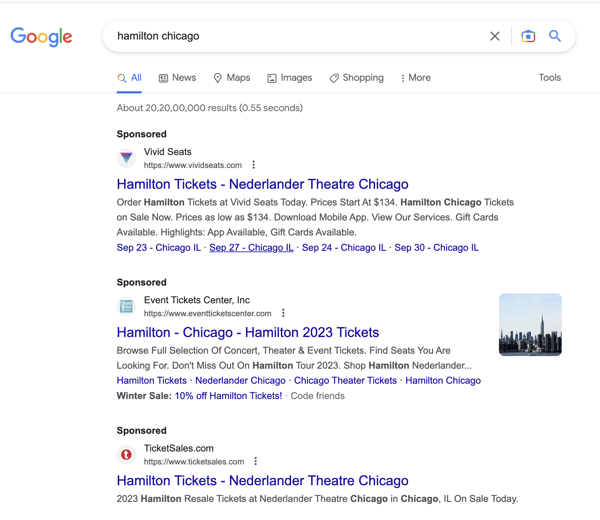Your website is live. Your product is solid. But the traffic? Crickets.
Sound familiar? You’re not alone. In 2025, getting people to visit your website isn’t as simple as it used to be. Between Google’s zero-click answers, AI summaries, and infinite scroll feeds, more users are finding what they need before they ever click a link.
So, if you’re just “showing up” online and hoping for the best, that’s not going to cut it. You need to actively attract the right people and give them a reason to stay.
Whether you’re a small business owner doing everything yourself, a SaaS founder trying to build a pipeline, or a marketer tasked with scaling growth on a tight budget, the challenge is the same: how do you turn your website into a growth machine?
In this guide, I’ll walk you through proven website marketing strategies that actually work in 2025, along with the marketing tools that can help you put them into action.
Top website marketing strategies in 2025
| Website marketing strategy | Goal | Best for |
| Search engine optimization(SEO) | Drive long-term, high-intent organic traffic | Businesses with existing search demand and long sales cycles (example, SaaS, services, niche ecommerce, publishers) |
| AEO/GEO/LLM optimization | Show up in AI search and chatbots | All online brands looking to appear in AI-generated answers. |
| Content marketing | Attract, engage, and educate website visitors | Businesses that rely on organic traffic, thought leadership, or educational marketing, like B2B SaaS, agencies, marketplaces |
| Email marketing | Nurture leads and retain visitors | Any business with a lead list or repeat customers like ecommerce, SaaS, media, or local services |
| Social media marketing | Build awareness and stay top of mind | Brands targeting consumers or professionals directly like DTC brands, retail and ecommerce shops, B2B SaaS |
| Paid advertising | Drive immediate, targeted traffic | Businesses launching new products, running campaigns, or needing fast visibility like ecommerce brands, early-stage startups |
| Affiliate marketing | Scale referrals with minimal upfront cost | Ecommerce, SaaS, course creators, and digital product sellers |
| PR and earned media | Build authority and expand reach | Startups, personal brands, product launches, and mission-driven companies |
| Online communities | Be in spaces your audience already participates | Brands serving engaged or technical audiences like software tools, wellness, gaming, creator economy |
| Review and reputation management | Show social proof support buying decisions | Service businesses, SaaS vendors, ecommerce brands, and local providers |
| UX and CRO | Improve conversions without increasing traffic | Any business with traffic but low engagement or signups like SaaS, DTC, or lead gen sites |
These are practical, repeatable tactics that help you attract qualified visitors, boost engagement, and turn passive browsers into paying customers.
TL;DR: Website marketing strategy at a glance
- What is it: A website marketing strategy is a plan to attract targeted visitors, and convert them into customers using channels like SEO, social media, email, and paid ads.
- When to do it: When launching a new site, entering new markets, facing flat traffic, or prepping for a product launch.
- How do I get people to visit my website? Focus on SEO, social media, paid ads, email marketing, and active participation in online communities like Reddit.
- How can I keep people on my site longer? Ensure fast load times, mobile optimization, strong UX design, interactive and valuable content, and clear CTAs.
- What’s a good way to launch a website marketing strategy? Start by defining your goals and audience. Then create content, optimize for SEO, run paid campaigns, launch email sequences, and consistently track performance.
How to create a website marketing strategy: Laying the groundwork
Before you dive into SEO, content calendars, or ad campaigns, it’s critical to build a strong foundation. A successful website marketing strategy starts with deep alignment across your product, business goals, and audience, not just keywords or design choices.
Selecting the right website marketing strategy isn’t limited to tangible resources, content, and design of your website. It requires you to understand your prospective market size, product fit, and business model in detail.
Here’s what you need to lock in before executing any tactics:
- Know your business inside and out: Start by understanding your product, value proposition, and business model. Talk to internal stakeholders across product, customer success, and sales. Dig into recent feature updates, top use cases, integration points, and common customer questions. When you’re clear on what your business offers and why it matters, your messaging becomes sharper and your marketing becomes more effective.
- Understand your audience and their intent: Identify who you’re trying to reach and what they’re actually looking for. Develop buyer personas that go beyond demographics to include key pain points and goals, buying triggers and decision influencers, preferred content formats and platforms, search behavior and intent. Use tools like customer surveys, support conversations, and site behavior analytics to validate your assumptions.
- Align your marketing goals with business objectives: Clarify whether your goal is to increase leads, drive signups, boost demo requests, or educate buyers. Each goal should tie back to a measurable KPI and have a clear role within the larger business strategy.
- Audit your existing website and content: Evaluate what’s currently live on your website. Note which pages and content perform best, where are users dropping off, is your value proposition clear above the fold, and are your CTAs driving conversions. A quick audit helps surface content gaps, UX issues, and areas for improvement. So you’re not building on a shaky foundation.
- Get cross-functional buy-in: A website marketing strategy doesn’t live in a silo. Involve teams across design, product, engineering, SEO, and content. Host a kickoff session to align on business priorities and success metrics, core messaging pillars, ownership and responsibilities, technical constraints or dependencies. Early buy-in keeps the strategy grounded in reality and helps avoid roadblocks later.
- Document your strategic framework: Before executing, write down your strategic baseline: marketing goals and KPIs, audience profiles and buying stages, messaging and content themes, primary distribution channels, tools and systems you’ll use to measure success. Having a documented plan ensures consistency, improves collaboration, and keeps everyone working toward the same outcomes.
10 best website marketing strategies that drive real results
Once your goals, audience, and messaging are in place, it’s time to execute. The following website marketing strategies are designed to help you attract the right visitors, engage them meaningfully, and convert them into loyal customers.
These tactics aren’t just trends. They’re repeatable, scalable, and aligned with how people discover and interact with websites in 2025.
1. Optimize website for search engines (SEO)
Search engine optimization (SEO) is the process of improving your website’s visibility in organic search results. It involves optimizing content, structure, and technical elements so your site ranks higher when people search for relevant keywords on Google and other search engines.
It’s not about gaming the algorithm. it’s about helping search engines understand and surface your content when it matters most.
Why it matters
Despite the rise of AI answers and zero-click results, search is still one of the highest-intent marketing channels out there. When someone types a query into Google, they’re actively looking for something. If your site appears in that moment, you’re already one step ahead.
SEO also:
- Drives consistent, compounding traffic over time
- Reduces dependence on paid ads
- Supports every other marketing effort because if people can’t find your site, nothing else matters
How to do it
A strong SEO strategy rests on three pillars:
1. Technical SEO
- Ensure your site is fast, mobile-friendly, and crawlable
- Use HTTPS, fix broken links, and submit an XML sitemap
- Add schema markup to help Google understand your content
2. On-page SEO
- Write content that answers real user questions. Identify the words and phrases your target audience uses to find your products or services with keyword research and incorporate them into your website’s content.
- Build topical authority by creating content clusters (pillar pages + supporting articles)
- Optimize title tags, meta descriptions, and headings. Structure your clearly with subheadings, bullet points, and summaries.
- Use clean URLs and internal linking
3. Offpage SEO
- Earn links from other reputable websites in your industry to build your website’s authority and ranking. These links act as “votes of confidence” for your site.
- Contribute valuable content to other reputable blogs in your industry, including a backlink to your website.
- Earn brand mentions across the web, even without direct links, as they signal to search engines that your brand is being discussed and recognized.
Bonus tip: Set up and optimize your Google Business Profile
If you operate in a specific geographic region or have a physical presence, creating a Google Business Profile (formerly Google My Business) can boost your local SEO. It helps you appear in map packs, local queries, and “near me” searches, even before users click through to your site.
If you are a SaaS brand, don’t stop there. Set up your profile for free on G2, the world’s largest software marketplace, to get in front of millions of software buyers.
SEO Tools to use
Here are some SEO tools to get you started:
- Semrush: Full-suite SEO tool for keyword research, site audits, and content planning
- Google Search Console: Track organic performance, indexing issues, and CTRs
- Google Trends: Best to find trending keywords in your niche
- SE Ranking: Best for keyword tracking, website audits, competitor analysis
Should SEO be the starting point of your website marketing strategy?
It depends. SEO is a great place to start when you need long-term growth and have time and resources, as it can take three to six months to see results.
If you need fast results or you’re launching something new, start with faster channels and build SEO in parallel.
2. Work on AEO, GEO or LLM optimization
This strategy goes by many names, like answer engine optimization (AEO), generative engine optimization (GEO), or just LLM optimization. No matter what you call it, the goal is the same: Optimize your website and content so it’s surfaced, cited, or referenced by AI-powered tools like Google’s AI Overviews, ChatGPT, Gemini, Perplexity, and Claude.
I’d say it’s still SEO but with an extra layer: making your content easy for machines to find, and understand not just humans.
Why it matters
“I found you through ChatGPT.” That’s something more marketers are hearing from buyers and leads today. More people are skipping traditional SERPs entirely and are asking questions directly inside AI tools and making decisions without clicking through to websites.
This strategy matters because:
- It increases brand exposure where early discovery now happens
- It helps you future-proof your website in a world of zero-click experiences
How to do it
There’s no rigid AEO playbook (yet), but early best practices include:
- Write clearly and structure content for quick extraction. Use H2s, H3s, bullet points, and FAQs to make it easier for LLMs to summarize or quote you directly. Follow SEO best practices.
- Use schema markup. Add structured data (FAQ, How-To, Organization, etc.) to help machines understand and contextualize your content.
- Target question-based queries. Create pages and sections that answer natural-language and long-tail questions like “What is payroll software?” or “What are the best time tracking tools for freelancers.”
- Audit what’s working in AI chatbots. Run relevant queries in ChatGPT, Perplexity, or Gemini. Look at which domains are cited, how content is phrased, and what formats appear most often.
Tools to use
While AEO/GEO is still an emerging field, these GEO tools help brands track and improve how they’re cited by AI-powered systems:
- Profound: Tracks AI mentions, sentiment, visibility, and competitor benchmarks in ChatGPT, Gemini, and more
- Scrunch AI: Monitors AI engine citations and provides insight into top-performing content in generative search
- Otterly.AI: Offers brand and content monitoring across leading AI platforms, helping you catch emerging opportunities
- AI Monitor: Focuses on managing brand presence in generative engine results.
- AthenaHQ: Designed for marketing and brand teams to optimize presence in AI search engines like ChatGPT and Perplexity
3. Create original content
If I’ve said it once, I’ve said it a hundred times. Content is King. Your website needs to offer free, unique, and competitive content that brings in visitors and ranks well while also setting you apart from the competition. In the context of website marketing, this includes blog posts, landing pages, product comparisons, thought leadership, templates, and more.
The goal isn’t just to publish for the sake of it. It’s to create content that aligns with your customer’s journey and encourages them to take action..
Why it matters
Content is what powers everything else on your site, from SEO to lead generation to email nurture flows. High-quality content:
- Drives organic traffic by targeting search intent
- Fuels distribution across email, social, and paid channels.
How to do it
Here’s how to approach content marketing strategically:
- Start with audience needs: Build content around real questions, objections, and goals your target users have, not just keywords. Use support tickets, sales calls, forums, and community chatter as input.
- Map content to the funnel: Cover top-of-funnel (awareness), mid-funnel (evaluation), and bottom-funnel (conversion) content. Think blog posts, use cases, comparison pages and customer case studies.
- Prioritize quality over volume: It’s better to have five well-written, helpful articles than 50 low-impact ones. Focus on clarity, value, and a strong POV.
- Repurpose and repackage: Turn a long-form guide into social posts, checklists, email sequences, or gated templates. One idea can fuel multiple touchpoints.
- Keep it fresh and relevant: Update your highest-performing content every 6–12 months to maintain rankings, reflect product changes, and surface new insights.
Tools to use
Having the right categories of tools in place helps you stay organized, consistent, and measurable. Here are the types of tools that support a scalable, high-impact content workflow:
- Project management tools like Asana and monday.com for planning content calendars, assigning tasks, and tracking deadlines across writers, editors, and designers
- AI content writers to help speed up ideation, outlines, or first drafts (used responsibly, not as a replacement for expertise)
- Plagiarism and originality checkers to ensure your content is unique and not overly AI-generated or duplicate
- SEO tools for keyword research, competitive analysis, and real-time content recommendations
- Graphic design tools for creating blog banners, infographics, social visuals, and templates
- Content management systems (CMS) for drafting, editing, and publishing content to your website efficiently
You can explore top-rated tools in each of these categories on G2 to find the best fit for your team’s workflow and scale.
4. Engage and nurture leads with email marketing
Email marketing is one of the most reliable and cost-effective ways to stay connected with your audience. It gives you direct access to people who’ve already shown interest in your brand, whether they subscribed to your newsletter, downloaded a resource, or signed up for a free trial.
Why it matters
Unlike social or search channels, email gives you control over the message, timing, and content. It keeps your brand top of mind and plays a major role in converting passive visitors into loyal customers. Done right, it’s a powerful retention and conversion tool. It’s also one of the highest ROI channels in digital marketing.
It helps you:
- Nurture leads who aren’t ready to buy yet
- Turn first-time visitors into subscribers and subscribers into buyers
- Deliver personalized content based on user behavior
- Drive repeat traffic to your website
How to do it
Here’s how to build an effective email marketing strategy:
- Grow your list organically: Use lead magnets, newsletter opt-ins, and exit-intent popups to invite visitors to subscribe.
- Create automated email flows: Set up welcome sequences, cart abandonment reminders, re-engagement flows, or product onboarding emails that run in the background.
- Segment your audience: Not every subscriber wants the same thing. Use segmentation based on behavior, demographics, or stage in the funnel to deliver more relevant messages.
- Do A/B tests: Small changes can significantly impact open rates and click-throughs. A/B test everything from tone to format to call-to-action placement.
Tools to use
For an effective email marketing setup, consider tools across these categories depending on your needs:
Explore the top-rated tools in these categories on G2 to build an email stack that fits your business model and audience size.
5. Drive engagement and traffic through social media
Gone are the days when social media is just for your friends to show off pictures of their vacation or their newborn baby. Over 5 billion people are using social media, and that number grows each year. Don’t miss out on an opportunity to convert those people into your customers.
Why it matters
Whether posting on TikTok, Instagram, Facebook, X, YouTube, Snapchat, LinkedIn, or a combination, social media is a great way to build your community. Social media marketing gives you:
- A way to distribute blog posts, case studies, product pages, and webinars
- Real-time engagement and audience insights
- A platform to humanize your brand and build loyalty
- Direct traffic back to gated or high-value website content
How to do it
- Chose your channels: Start by focusing on the platforms where your target audience is already active. For B2B brands, that might be LinkedIn and YouTube. For DTC or creator-led businesses, it could be Instagram, TikTok, or Threads.
- Nail the formats: Create native content first, like short videos, carousels, graphics, or behind-the-scenes updates, and link back to relevant parts of your website when it adds value. Your social should guide users to something worth their click, like a new feature launch, landing page, or case study.
- Build a content calendar: Maintain a consistent posting cadence and experiment with post formats, captions, and timing. Use social media as a two-way street: ask questions, respond to comments, and join industry conversations instead of just broadcasting announcements.
- Engage with others: Collaborate with influencers, creators, or niche community leaders to extend your reach. And remember to track what’s actually driving traffic or conversions not just likes.
Tools to use
A focused social media strategy typically requires support from the following tool categories:
6. Capture demand quickly with paid advertising
Paid advertising is one of the fastest ways to drive targeted traffic to your website, especially when you’re launching something new, validating messaging, or trying to boost high-performing content. Whether it’s through search, social, or display, paid ads give you control over who sees your offer, when, and where.
Essentially, you pay a fixed price for every click your ad gets on the search engine results page, with the goal of maximum conversions.

If you choose to use Google AdWords, there is no spending requirement, so that you can set your price to as little as $5 a month or as grand as $5,000 a month. No matter your budget, you need to aim for at least twice the amount of lead acquisition as your investment to receive the best ROI. Your ad, the offer, and the landing page the ad leads to must all work towards the same goal – converting customers.
Why it matters
For many businesses, paid is the difference between waiting and scaling. It
- Provides immediate visibility to your most important pages, products, or offers
- Helps you test headlines, positioning, and CTAs quickly
- Reaches new audiences through targeting (search intent, lookalikes, retargeting)
- Supports launches, time-sensitive promos, and lead-gen goals
- Complements slower-burn channels like SEO and content marketing
How to do it
- Choose the right channels for your audience: Depending on your business and your target audience, choose the channel. For example, Google Ads for high-intent search, Meta for broad reach, LinkedIn for B2B, and YouTube for awareness.
- Match your ad messaging to dedicated landing pages: Create focused pages that align with each campaign’s message and call to action, not just your homepage.
- Retarget visitors: Show ads to users who have previously visited your website or interacted with your ads, reminding them of your brand and potentially driving conversions.
- Measure and optimize campaign performance: Monitor cost per click (CPC), cost per acquisition (CPA), and return on ad spend (ROAS) to guide optimization.
- Start small, then scale: Launch with a test budget to identify top-performing channels and creatives before increasing spend.
Tools to use
7. Build trust through third-party advocacy
People trust people, not just brands. This strategy blends public relations, affiliate marketing, and review management into a unified play: letting other people validate your product on your behalf.
Why it matters
In 2025, third-party advocacy directly impacts how you’re discovered and perceived across search, social, and AI-generated summaries. When buyers see others talking about you, whether it’s a creator on YouTube, a journalist in a trade publication, or a real customer on G2, it builds instant credibility.
- Increases trust and conversion rates on landing pages and product pages
- Helps mitigate negative press or outdated reviews
- Drives high-quality referral traffic from affiliate or media coverage
- Reinforces brand authority without relying solely on paid campaigns
How to do it
To build meaningful third-party advocacy, combine earned visibility, reputation management, and strategic partnerships with influencers or affiliates.
Here’s how to make it work:
- Earn media and expert mentions: Pitch journalists, podcasters, and newsletters with fresh data, founder stories, or bold takes. Create a press page on your website to make it easy for them to feature you.
- Activate affiliates and creators: Partner with incluencers in your niche. Give them tools, like branded assets, and comparison content to promote your product authentically.
- Manage your reviews: Claim and optimize your profiles on major review platforms like G2 and Google. Regularly request reviews post-purchase or post-onboarding. Highlight your best testimonials throughout your site.
- Be transparent and FTC-compliant: Ensure your partners disclose their relationships properly, and maintain ethical review collection practices.
Tools to use
You’ll need tools to manage relationships, track performance, and scale your affiliate program smoothly.
8. Engage your audience in the communities they already are in
Your audience is already having conversations about your category, often in spaces like Reddit, Slack groups, Discord servers, LinkedIn communities, or niche forums. Showing up and participating in these online communities allows you to build credibility, surface insights, and create traffic opportunities that feel natural, not forced.
Today, community engagement has become a powerful way to drive brand awareness, content discovery, and long-term loyalty, without relying on ads or algorithms.
Why it matters
Participating in relevant communities extends your reach beyond traditional channels.
- Creates engagement in peer-driven spaces
- Drives qualified traffic to your site through organic conversations
- Helps you identify customer pain points and content opportunities
- Builds brand equity with potential buyers before they land on your website
- Strengthens user loyalty and word-of-mouth advocacy
How to do it
Community engagement backfires if not done with right intention of genuinely helping the members. So, lead with contribution, not promotion. Focus on helping, not selling. It pays off in long-term.
- Identify where your audience gathers: Join platforms and spaces where your target users share advice or opinions like Reddit subs, Slack groups, private forums, Discord, or even newsletter communities.
- Participate with consistency and value: Answer questions, offer useful insights, and contribute to threads with your expertise (not your pitch).
- Create or host your own branded community: Build a peer-led group or user network where customers and prospects can connect, learn, and grow.
- Use audience questions to guide content: Shape your website content around recurring discussion themes or knowledge gaps you spot in community spaces.
Tools to use
These tools can help you discover, manage, and scale your community engagement efforts.
- Online community management platforms to host branded groups or discussion hubs
- Audience insight and social listening tools yo find out where your audience spends time and what they care about
- Event and engagement tools to run AMAs, roundtables, or webinars that drive post-event traffic to your site
Reddit marketing is having a moment: here’s how to do it right
Among online communities, Reddit has become a go-to for product research, and peer validation recently. With Google and LLMs surfacing Reddit threads, smart brands are showing up where users ask questions, share frustrations, and compare tools.
But Reddit isn’t a billboard it’s a conversation. To stand out, you need to participate like a person, not a marketer.
Here are some best practices on Reddit marketing and community engagement:
- Participate in relevant subreddit discussions, offer insights, answer questions, and build genuine connections within subreddits.
- Avoid link dropping. Share experiences, examples, or tools when they’re contextually helpful, not promotional.
- Before engaging, read and the rules of each subreddit (found in the sidebar) to avoid getting banned.
- Over time, create a subreddit for users to interact, ask questions, share feedback about the brand if its suitable for your product or service, like r/sonos, r/CloudFlare, etc
9. Turn visitors into customers with better UX and CRO
You’ve worked hard to drive traffic to your website. Now it’s time to make that traffic count. User experience (UX) and conversion rate optimization (CRO) ensure that when visitors land on your site, they can easily find what they need, and take meaningful action.
This isn’t about flashy design. It’s about clarity, speed, and reducing friction at every step of the user journey.
Why it matters
Good UX and CRO help you get more value out of every visitor without increasing ad spend.
- Improves conversion rates for demos, signups, purchases, or form fills
- Reduces bounce rates and improves time on site
How to do it
Small tweaks in UX can lead to major gains in conversions, especially when backed by data.
- Improve page speed: Slow load times kill conversions. Aim for sub-3-second speeds across desktop and mobile.
- Design mobile-first: Prioritize responsiveness and tap-friendly layouts. Mobile users now make up the majority of traffic in most industries.
- Simplify navigation: Make it easy to explore. Use clear menus, breadcrumbs, and internal linking to guide users toward action.
- Remove friction: Streamline forms, reduce required fields, and eliminate unnecessary steps between interest and conversion.
- Personalize the experience: Tailoring headlines, or product suggestions based on a visitor’s behavior, source, or location can dramatically increase engagement and conversions.
Tools to use
These tools help you analyze user behavior, test variations, and make informed design decisions.
- Digital analytics tools to visualize clicks, scroll depth, and rage clicks
- A/B testing platforms such as Google Optimize, Optimizely, or VWO for testing headlines, layouts, or CTA variations
- Page speed and performance tools like Google PageSpeed Insights, GTmetrix, or WebPageTest
10. Track performance and optimize continuously
Website marketing isn’t “set it and forget it.” The best-performing strategies evolve over time, based on what the data tells you. Tracking performance helps you understand where your traffic is coming from, how people behave on your site, and what actually drives results, so you can scale what works and fix what doesn’t.
Optimization isn’t just about metrics. It’s about making better decisions, faster.
Why it matters
Without tracking, you’re guessing. With it, you’re compounding your impact. Tracking
- Identifies high-performing traffic sources and underperforming channels
- Helps you optimize content, campaigns, and UX with real data
- Surfaces friction points in the customer journey
- Proves marketing ROI and guides future budget allocation
- Encourages a test-learn-repeat mindset across your team
How to do it
Set clear goals, measure against them consistently, and turn insights into action.
- Define your key metrics: Focus on what matters most like conversions, bounce rate, session duration, form fills, revenue, or lead quality.
- Set up goal tracking: Use platforms like Google Analytics, GA4, or HubSpot to track micro and macro conversions.
- Use UTM parameters and attribution models: Understand where your traffic is coming from and how it behaves.
- Create dashboards for visibility: Share performance snapshots with your team and stakeholders regularly.
- Test and iterate: Treat every channel and campaign as a live experiment. Document what works, what doesn’t, and why.
- Benchmark against past data: Look for trends, seasonality, and patterns to plan more effectively.
Tools to use
These tools help you measure, analyze, and optimize every aspect of your website marketing strategy. You can use a combination of already mentioned software like
- Digital analytics platforms like GA4 and GSC for traffic, behavior, and goal tracking
- A/B and multivariate testing platforms for validating messaging, layout, and design changes
- Attribution tools to map out full-funnel journeys across multiple channels
- Dashboards and reporting platforms like Looker Studio to visualize key KPIs and trends
Other website marketing strategies to consider
The 12 core strategies we’ve covered lay a strong foundation for driving traffic, building trust, and converting users, but depending on your business model, growth stage, or audience, additional tactics can help you scale faster or stand out in saturated markets.
Here are a few worth exploring:
11. Programmatic SEO and localization
Programmatic SEO involves creating hundreds or thousands of optimized pages at scale using structured data. It’s particularly effective for marketplaces, aggregators, SaaS tools with integrations, or any business that can template content based on location, features, or use cases. Just make sure quality and user intent stay at the center.
Another tactic here is translating and localizing your website for specific regions, if you’re targeting global audience.
12. Interactive tools
Quizzes, calculators, free tools product finders, and comparison tools not only engage visitors. They increase time on site and encourage sharing. If your audience needs help making decisions, interactive experiences can guide them and move them closer to conversion. They’re also great for lead generation and differentiation.
13. Conversational marketing
Not every buyer is ready to convert on the first visit and not every question is answered on your landing page. That’s where conversational marketing comes in.
Deploy AI chatbots or live chat on high-intent pages like pricing or demo requests to engage visitors, answer questions, and qualify leads in real time. Integrate with your CRM, personalize conversations based on behavior, and continuously track performance to optimize engagement and conversions.
This approach works especially well for businesses with longer sales cycles, high-ticket products, or complex offerings that require more explanation.
You can promote a website through a mix of strategies including SEO (to rank on search engines), social media marketing, email newsletters, paid ads (Google, Meta, etc.), content marketing (blogs, videos, tools), influencer or partner collaborations, and launches on platforms like Product Hunt or Reddit. The best results come from combining multiple channels based on your audience and goals.
The fastest way to drive traffic to a new website is to run paid ads (Google, Meta, TikTok) and promote on social media (LinkedIn, TikTok, Reddit, Product Hunt). Pair this with influencer or newsletter partnerships for quick, targeted exposure.
Most businesses see results in 3–6 months, but it depends on competition, domain authority, and execution quality.
Yes, but only if it’s original, structured, and optimized for both human readers and AI summarizers.
Yes. You still need to market your website even if you have social media. Social platforms drive awareness, but your website is where conversions, SEO growth, and long-term brand authority happen.
Also, your website is your owned asset. Social media platforms change algorithms, but your site is always under your control. Marketing your site ensures you’re not dependent on algorithms and builds a more sustainable, owned digital presence.
Yes, you can market a website with no budget by leveraging organic strategies like SEO, social media, Reddit, and forum engagement, content marketing (e.g., blogs or videos), and launching on platforms like Product Hunt. Consistency, value-driven content, and tapping into communities where your audience hangs out are key to gaining traction without spending money.
Yes, but with human oversight. Use AI for ideation, outlines, or rough drafts, then refine with your expertise and brand voice.
By now, you’ve seen just how many ways there are to market a website and how different the path can look depending on your business, your goals, and your audience.
You don’t have to do everything. What matters is starting with a few high-impact strategies that fit where you are now and building from there. Whether that’s SEO, email, community, or paid ads, the right approach is the one that helps real people find, trust, and choose you.
Your website is where those decisions start. Make it useful. Make it clear. Make it worth coming back to. Because great marketing doesn’t just bring people in. It keeps them coming back and brings the right ones with them.
Your website is up and live. Now what? Ensure you never lose sight of your branding initiatives and be a top consumer choice by tracking website KPIs.
This article was originally published in 2019. The content has been updated with new information.









